The weather changes today and not for the better. Christi and I are sad to leave the luxury of the Hotel de la Opera, which is undoubtedly one of the more luxurious hotel experiences we’ve had in South America. Still travelers must travel, although we are cheating a little. We’ve hired a car and driver to cover a few sites of interest immediately to the north of Bogota over the next few days. The first of these is Zipaquira, or more accurately the underground salt cathedral which gives the town its fame. Our driver / guide, Hasanito, keeps up a constant chatter as he drives along, but as he only speaks Spanish he’s basically talking to himself. I catch the odd phrase, including the fact that a nearby castle was once owned by the legendary drug smuggler Pablo Escobar. It’s now a museum.
It’s actually a pleasant drive once we escape Bogota. As usual, the driving (including by our own guide) is a little cavalier and there are the obligatory pollution-belching lorries, while cows graze by the side of the road (tethered to avoid escape), dogs scurry past eager to reach their destination, while poncho-clad locals dodge the incessant rain drops.
For a country that is still developing its tourist infrastructure, the number of English tours available is quite remarkable, including the Salt Cathedral. Salt mining was and remains big business in Colombia. And since mining is dangerous and the locals are very religious it’s not surprising that small altars began to crop us, leading eventually to the formation of an underground cathedral. Active mining has moved to a different seam, allowing tourists like Christi and I to visit. The vast underground tunnels now have Stations of the Cross carved in salt and have been illuminated in ever-changing colored lights. The main cathedral chamber can accommodate over 8,000 worshippers and services are held on Sunday. Easter plays to packed houses. The altar is made of salt also and the major cross (15 meters tall) is carved into the rock face.
During the 3-hour drive to our next destination (the classic colonial town of Villa de Leyva), we get to see at firsthand what months of rain have done to the countryside: many fields are flooded and sandbags even line some of the roads. We pass by a Disneyesque Parque Jimaine Duque with surreal castles and a mosque-like edifice dominating the theatre. Hasanito kindly stops at Puente de Boyaca. This is the battlefield where, on August 7th 1819, Simon Bolivar defeated the Spanish and brought freedom to Colombia. There’s a small bridge across which the Colombians marched to engage the Spanish, an eternal flame, and a statue of the great man himself who certainly does get around. We finally arrive in Villa de Leyva under blue skies near sunset. We are once again staying in a charming colonial hotel, La Posada de San Antonio, which even comes with complimentary cocktails!
Blog post by Roderick Phillips, author of Weary Heart – a gut-wrenching, heart-wrenching, laugh-wrenching ride.

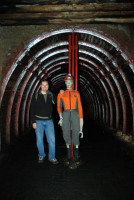
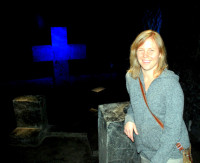
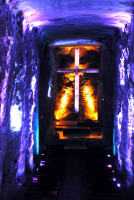
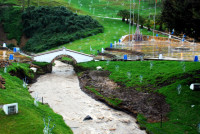
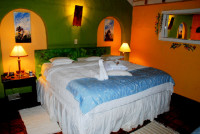
Speak Your Mind